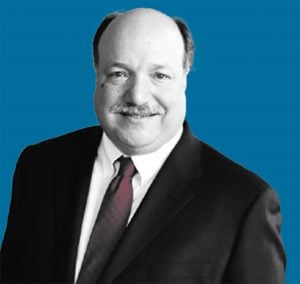 Many people make the mistake of thinking that an emergency fund is only important while they're working. (Photo: Shutterstock)
Many people make the mistake of thinking that an emergency fund is only important while they're working. (Photo: Shutterstock)
Can an old-fashioned financial planning adage be the answer to the feared sequence of return risk? Those who develop financial wellness programs may be interested in the answer. It turns out, the same vehicle can protect people both before and after retirement. What is it? And why (and how) can it effortlessly serve this dual purpose?
It's called the "emergency fund." The idea is as old as some of those dusty financial planning texts you haven't cracked open in years (because everything is online now). It's a concept aspiring CFAs are taught: People should keep anywhere from six to 18 months of expenses stashed away in some safe, liquid account.
Related: 5 best, 5 worst metro areas for beefing up your emergency savings
 Christopher Carosa, CTFA, is chief contributing editor for FiduciaryNews.com, a leading provider of essential news and information, blunt commentary and practical examples for ERISA/401(k) fiduciaries, individual trustees and professional fiduciaries.
Christopher Carosa, CTFA, is chief contributing editor for FiduciaryNews.com, a leading provider of essential news and information, blunt commentary and practical examples for ERISA/401(k) fiduciaries, individual trustees and professional fiduciaries.The reason makes sense. Something bad might happen. It may require ready cash. The number of months you choose to save depends on the risks inherent in your personal situation.
For example, you might use this fund if you lost your job. An emergency fund gives you money to live off of while you're trying to find another job. If the economy is bad and a lot of people are out of work, it might take you longer to land a new job. In this case, having an emergency fund with 18 months' worth of expenses would be a good idea. Likewise, if the economy is great and everyone is getting hired, you might need only six months' worth of expenses to tide you over. Easy. Done. Move on to the next thing.
But here's where many make a big mistake. They think an emergency fund is only important while they're working. They think they won't need it once they retire.
If they're lucky, they may be right. But why risk the roll of the dice?
The sequence of return risk implies you roll snake eyes the year you retire. But say the market (and your retirement fund) falls precipitously just as you are about to begin withdrawing from it. This drop blows up all your neatly packaged assumptions and you end up spending down your retirement account faster than anticipated.
What if you kept that emergency fund around for retirement? You could use it to help alleviate the potential bad luck of retiring on the wrong side of the sequence of return risk.
Here's how to do it. Slowly expand your emergency fund to cover a minimum of two years' worth of expenses. Why two years? Because, on average, that's what you'll typically find it takes for the market to recover from a bear market (20 percent drop). Incidentally, corrections (a 10 percent drop) are hardly a blip and those losses are generally recovered in less than a year.
If you can afford to, keep five years' worth of expenses in the emergency fund. That's how long it took to recover from the 2007–2009 bear market.
It turns out classic financial planning practices can provide an answer to a modern retirement fear. The emergency fund is easy to understand and easy to implement. Use it as protection from the sequence of return risk.
Read more:
© 2025 ALM Global, LLC, All Rights Reserved. Request academic re-use from www.copyright.com. All other uses, submit a request to [email protected]. For more information visit Asset & Logo Licensing.







